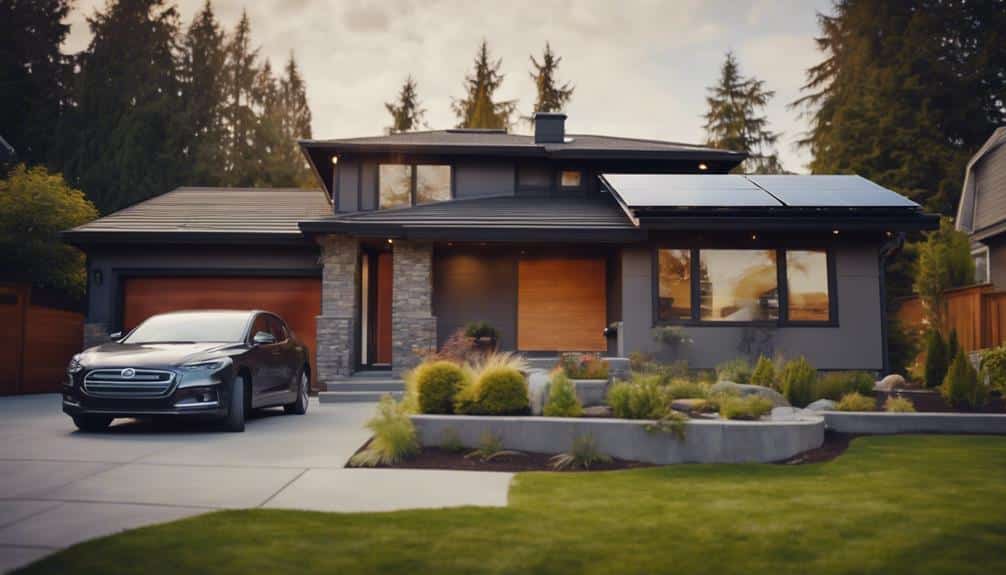
If you've ever walked into a Seattle home where LED lighting has been installed, you'd immediately notice the difference in ambiance and energy efficiency. Imagine making your home not just brighter but also more cost-effective and eco-friendly. But LED lighting is just the beginning of a range of electrical upgrades that can transform your living space. From smart thermostats to solar panel installations, each upgrade offers its own set of benefits. Stay tuned to discover how these upgrades can enhance your home in Seattle.
Key Takeaways
- LED lighting and motion sensors reduce energy consumption and maintenance costs.
- Energy-efficient appliance upgrades lower utility bills and environmental impact.
- Solar panels and efficient HVAC systems offer long-term energy savings and eco-friendly benefits.
- Insulation choices and electrical upgrades enhance home efficiency and comfort while saving on costs.
LED Lighting Installation
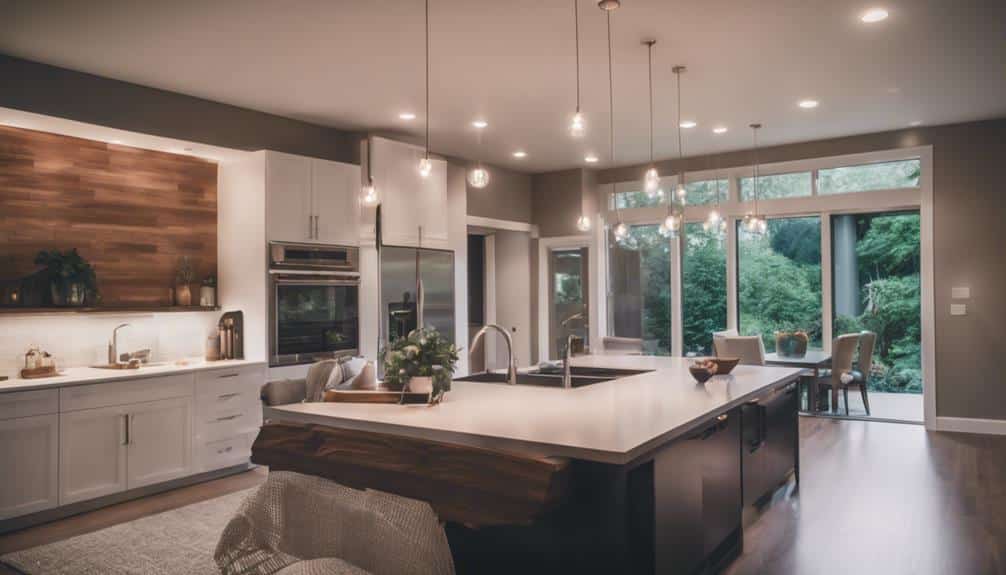
When upgrading to energy-efficient LED lighting in Seattle, ensure you consult with a certified electrician for proper installation. LED lighting provides significant energy-saving benefits due to its efficiency and longevity compared to traditional lighting options. These cost-effective solutions not only reduce electricity consumption but also require less maintenance over time. By switching to LED lighting, you can lower your energy bills and decrease your carbon footprint. Certified electricians have the expertise to install LED fixtures correctly, ensuring optimal performance and longevity. Proper installation is crucial for maximizing the energy-saving benefits and ensuring the longevity of your LED lighting system. Invest in energy-efficient LED lighting today for a brighter, more cost-effective future.
Smart Thermostat Integration
To further enhance your energy efficiency upgrades in Seattle, consider integrating smart thermostats for optimal control and savings. Smart thermostats offer advanced features such as energy consumption analysis and climate control optimization. By analyzing your energy usage patterns, these devices can suggest settings to help you reduce energy waste and save on your utility bills. Through precise temperature adjustments based on your habits and preferences, smart thermostats ensure that your home is always comfortable while minimizing unnecessary heating or cooling. With the ability to remotely monitor and adjust settings via your smartphone, you can efficiently manage your home's climate control even when you're away. Invest in smart thermostat integration to maximize your energy savings and enhance your overall comfort.
Energy-Efficient Appliance Upgrades
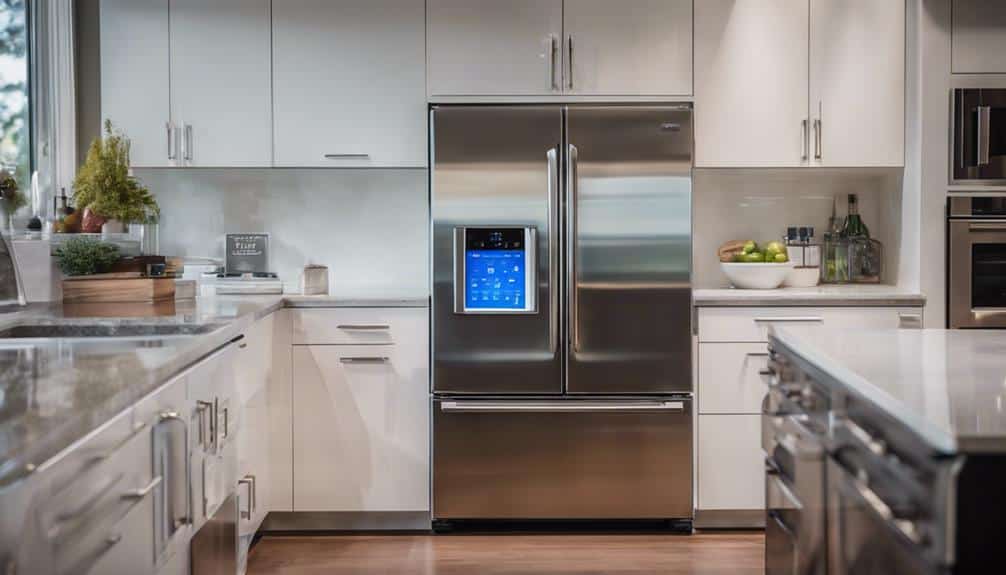
Consider upgrading your appliances to energy-efficient models to achieve significant savings on your utility bills while reducing your environmental impact. Conducting an energy audit can help identify which appliances are the biggest energy consumers in your home. Look for appliances with Energy Star ratings to ensure high efficiency. Additionally, take advantage of rebate programs offered by utility companies for upgrading to energy-efficient appliances. Here is a comparison table to guide you in selecting the right energy-efficient appliances:
| Appliance | Energy Consumption | Energy Efficiency Rating |
|---|---|---|
| Refrigerator | Low | Energy Star Certified |
| Washer | Moderate | High Efficiency |
| Dryer | High | Energy Star Certified |
| Dishwasher | Moderate | High Efficiency |
Solar Panel Installation
For optimal energy efficiency and cost savings, explore the installation of solar panels on your property. By harnessing the power of the sun, solar panels convert sunlight into electricity, reducing your reliance on traditional energy sources. In Seattle, where the sun does make appearances, solar panels can still be a viable option. Government incentives, such as tax credits and rebates, can significantly offset the initial installation costs. Additionally, over time, the financial savings from generating your own electricity can be substantial. Make sure to consult with a professional to determine the best placement for maximum sun exposure and efficiency. Investing in solar panels not only benefits the environment but also your wallet in the long run.
Motion Sensor Lighting
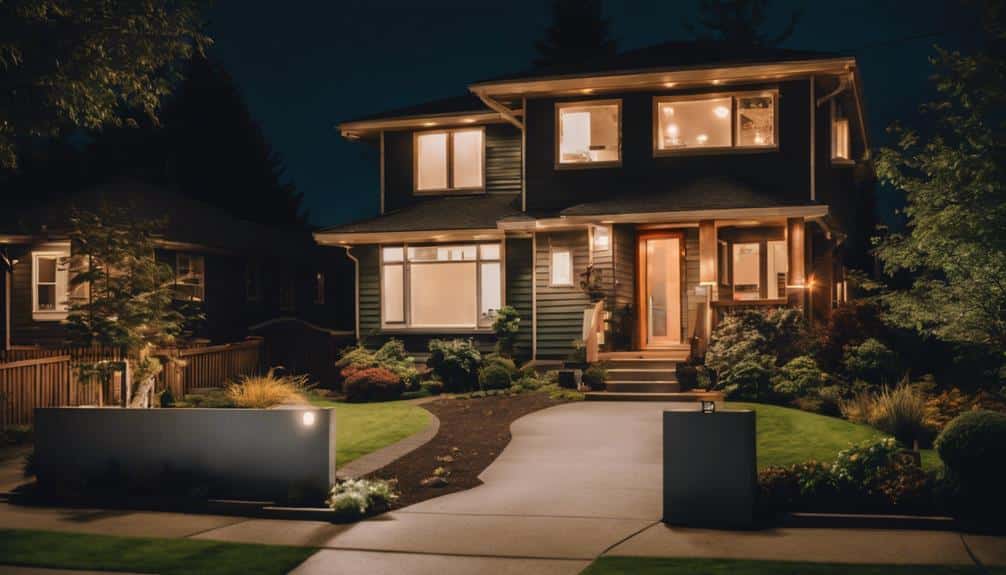
Enhance your property's energy efficiency with the installation of motion sensor lighting systems. When considering this upgrade, keep in mind the following key factors:
- Sensor Placement: Strategically position sensors in areas with high traffic flow to maximize energy savings by ensuring lights only activate when needed.
- Energy Savings: Motion sensor lighting can lead to significant cost reductions by preventing unnecessary use of electricity.
- Light Sensitivity and Activation Range: Adjust the sensitivity levels and activation range of the sensors to fine-tune the system according to your preferences and needs.
Programmable Thermostat Installation
When considering programmable thermostat installation, remember to focus on energy-saving temperature settings tailored to your schedule. Explore options that offer compatibility with smart home systems for enhanced control and efficiency. The installation process for these thermostats is designed to be straightforward and user-friendly, making it a practical upgrade for your home's energy efficiency.
Energy-Saving Temperature Settings
Consider installing a programmable thermostat to optimize energy-saving temperature settings in your Seattle home. This upgrade can significantly enhance your energy efficiency and reduce utility costs. To make the most of your programmable thermostat, ensure you follow these energy-saving habits:
- Set a Schedule: Program your thermostat to adjust the temperature based on your daily routine.
- Utilize Zones: Take advantage of zoning features to heat or cool specific areas of your home as needed.
- Maintain Regular Programming: Make sure to update your thermostat settings seasonally to reflect changing weather patterns and your occupancy habits.
Smart Home Compatibility Options
To maximize the efficiency of your programmable thermostat installation, explore smart home compatibility options that seamlessly integrate with your existing technology infrastructure. By opting for smart speaker compatibility and energy monitoring devices, you can take your energy-saving efforts to the next level. These devices allow you to control your thermostat with voice commands through smart speakers like Amazon Alexa or Google Home. Additionally, energy monitoring devices provide real-time insights into your energy usage, helping you make informed decisions to further reduce consumption. Check out the table below for a comparison of some popular smart home compatibility options available for programmable thermostats:
| Smart Home Compatibility Options | Features | Compatibility |
|---|---|---|
| Amazon Alexa | Voice control, energy reports | Most smart thermostats |
| Google Home | Voice commands, energy monitoring | Various smart thermostats |
| Energy Monitoring Devices | Real-time usage tracking, cost analysis | Compatible with most thermostats |
Installation Process Simplicity
For a straightforward and efficient programmable thermostat installation, prioritize understanding your home's electrical system layout. This will ensure a smooth upgrade process and help you maximize energy savings. When considering the installation, focus on the following key aspects:
- Installation efficiency: Opt for a programmable thermostat that aligns with your current wiring setup to streamline the installation process.
- Energy savings: Choose a model that offers energy-saving features like scheduling options and temperature adjustments based on your usage patterns.
- Upgrade simplicity: Look for programmable thermostats with user-friendly interfaces and clear instructions for easy installation, ensuring a hassle-free upgrade experience while keeping costs in check.
Insulation Upgrades
When considering insulation upgrades, it is crucial to evaluate the different types available and their respective benefits. You should also take into account the installation cost considerations to make an informed decision. Understanding the specific insulation type options and their associated installation costs is key to optimizing energy efficiency in your Seattle home.
Insulation Type Options
Consider selecting the appropriate insulation type based on factors such as R-value, material durability, and compatibility with your home's structure. When upgrading your insulation, the right choice can lead to significant energy savings and increased comfort in your home. Here are some key points to consider:
- Insulation material comparison: Evaluate different insulation materials like fiberglass, cellulose, and spray foam to determine which best suits your needs.
- Energy saving benefits: Choose insulation with high R-values to maximize energy efficiency and reduce heating and cooling costs.
- Installation techniques: Consider the installation method required for each type of insulation to ensure proper coverage and effectiveness.
Installation Cost Considerations
To determine the cost of installing insulation upgrades, assess factors such as material expenses, labor fees, and any additional equipment requirements. When considering cost-saving measures, conducting an energy consumption analysis can help determine the most effective insulation upgrades for your Seattle home. Below is a breakdown of typical cost considerations for insulation upgrades:
| Cost Component | Description |
|---|---|
| Material Expenses | Cost of insulation materials per square foot |
| Labor Fees | Installation charges per hour or project-based |
| Equipment Needs | Additional costs for specialized equipment |
| Total Cost | Sum of material expenses, labor fees, and equipment needs |
Electrical Panel Upgrade
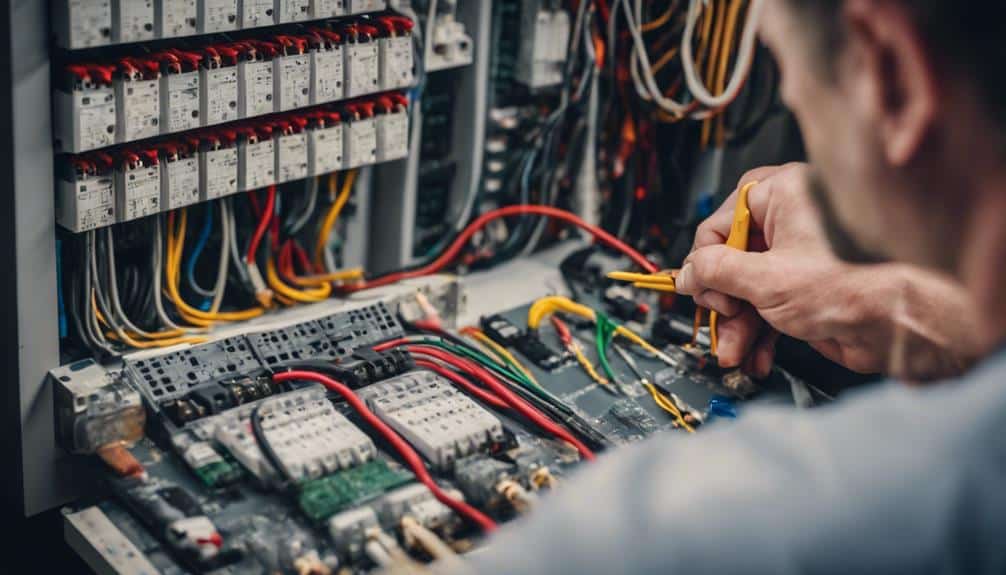
For an efficient electrical system, upgrading your electrical panel is essential. When considering an electrical panel upgrade, ensure you adhere to electrical safety measures and perform regular panel maintenance. This not only enhances safety but also prolongs the lifespan of your electrical system. Additionally, make sure the upgrade meets electrical code compliance standards and suits your panel size requirements. Upgrading to a larger panel size may be necessary to accommodate increased electrical demands and prevent overloading. By following these guidelines, you can guarantee a smooth and reliable electrical system that meets the needs of your household or business.
Energy-Efficient HVAC System
Upgrading to an energy-efficient HVAC system can significantly reduce energy consumption and operating costs while enhancing indoor comfort levels. To maximize the benefits of this upgrade, consider implementing HVAC maintenance tips such as regular filter replacements, cleaning coils, and scheduling professional tune-ups. Energy-efficient HVAC technology, like variable-speed motors and programmable thermostats, can further optimize energy usage. In Seattle, take advantage of available HVAC rebates to offset initial costs and promote eco-friendly practices. The benefits of energy-efficient HVAC systems extend beyond cost savings; they also contribute to a healthier environment by reducing greenhouse gas emissions. By investing in energy-efficient HVAC solutions, you not only improve your home's comfort but also make a positive impact on the community.
Weather Stripping Installation

Consider weather stripping installation as a practical solution to improve energy efficiency and reduce heat loss in your Seattle home. Weather stripping involves sealing gaps around doors and windows to prevent air leaks, a key aspect of energy-saving techniques. When considering weatherproofing solutions, weather stripping stands out for its long-term benefits. Here are some key points to keep in mind:
- DIY vs Professional: Weather stripping can be a DIY project for those with the necessary skills, but hiring a professional ensures precise installation.
- Energy Saving Techniques: Weather stripping is a proven method to lower energy bills by preventing drafts and maintaining consistent indoor temperatures.
- Long Term Benefits: Properly installed weather stripping can lead to significant savings on heating and cooling costs over time.
Frequently Asked Questions
What Are the Benefits of Combining Multiple Energy-Efficient Upgrades in a Home?
Combining multiple energy-efficient upgrades in your home provides significant benefits. You can achieve cost savings by reducing energy consumption and positively impact the environment by lowering your carbon footprint. Upgrades like LED lights, smart thermostats, and energy-efficient appliances contribute to these advantages.
Are There Any Government Incentives or Rebates Available for Residents in Seattle Who Invest in Energy-Efficient Upgrades?
Government incentives and rebates are available to help you save on energy-efficient upgrades in Seattle. These programs offer cost savings and promote energy efficiency, allowing you to invest in upgrades with reduced financial impact while benefiting the environment.
How Can I Determine Which Energy-Efficient Upgrades Are Best Suited for My Specific Home and Lifestyle?
To determine the best energy-efficient upgrades for your home and lifestyle, assess current energy usage, consider cost savings, and evaluate environmental impact. Seek custom solutions that offer long term benefits tailored to your specific needs.
Are There Any Maintenance Requirements or Considerations to Keep in Mind After Installing Energy-Efficient Upgrades?
After installing energy-efficient upgrades, ensure to maintain them regularly. Check for any issues that might affect performance. Long term considerations include updating technology as needed, scheduling professional inspections, and keeping up with manufacturer recommendations for optimal efficiency and safety.
What Is the Average Return on Investment for Energy-Efficient Upgrades in Seattle Homes?
When considering energy-efficient upgrades in Seattle homes, the average return on investment is influenced by factors such as energy consumption, cost savings, environmental impact, and potential increases in home value. Make informed decisions for optimal results.


